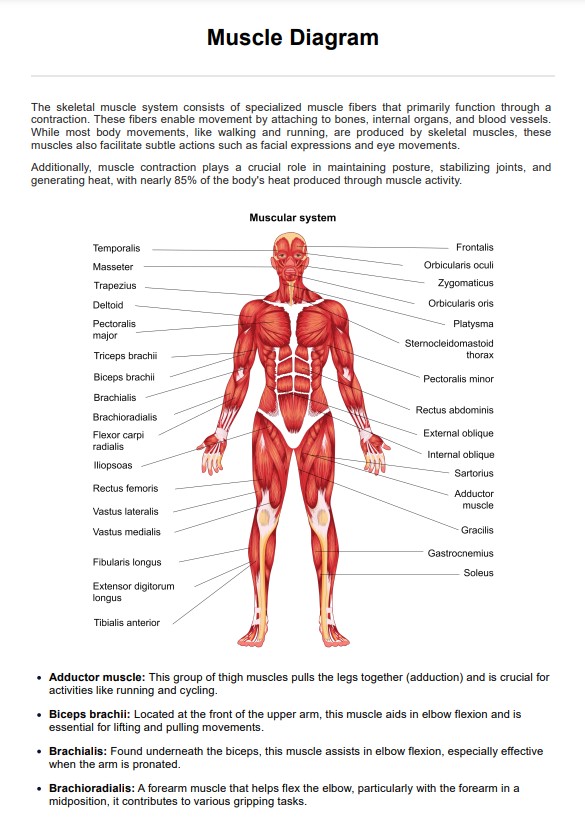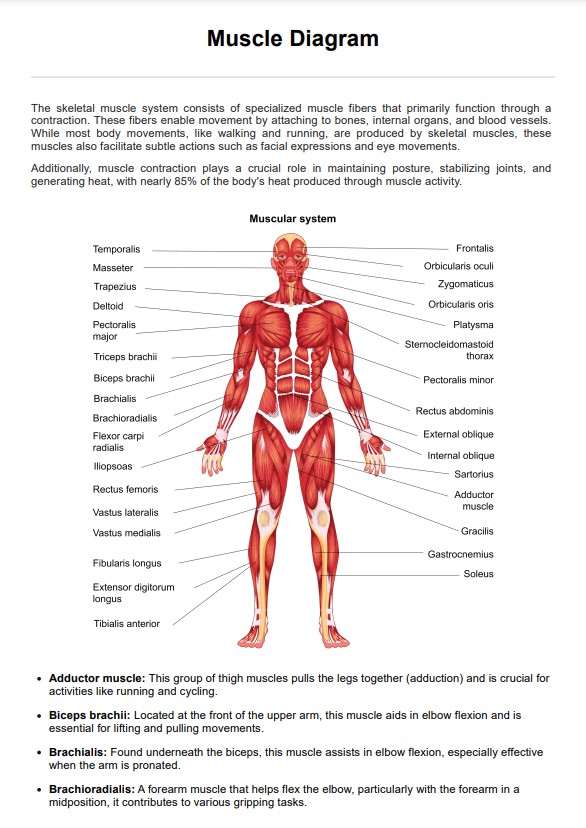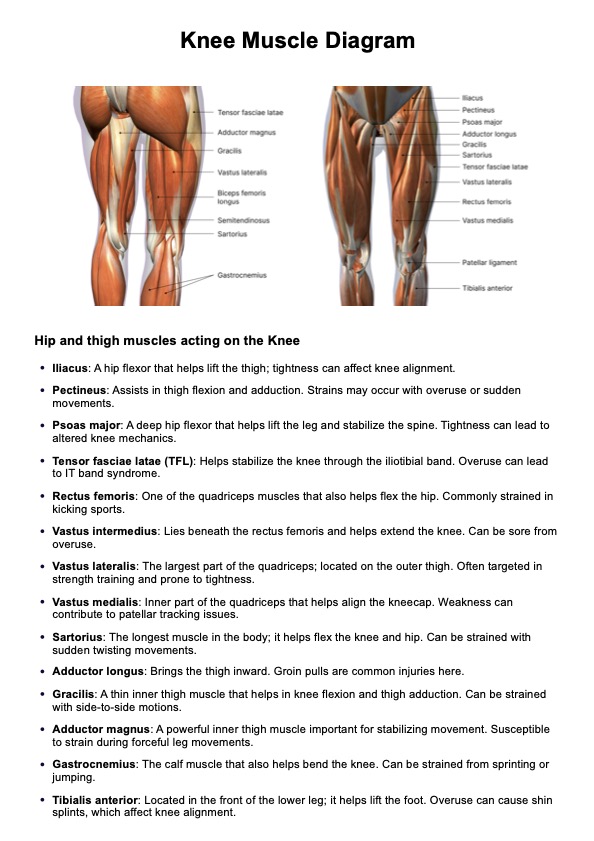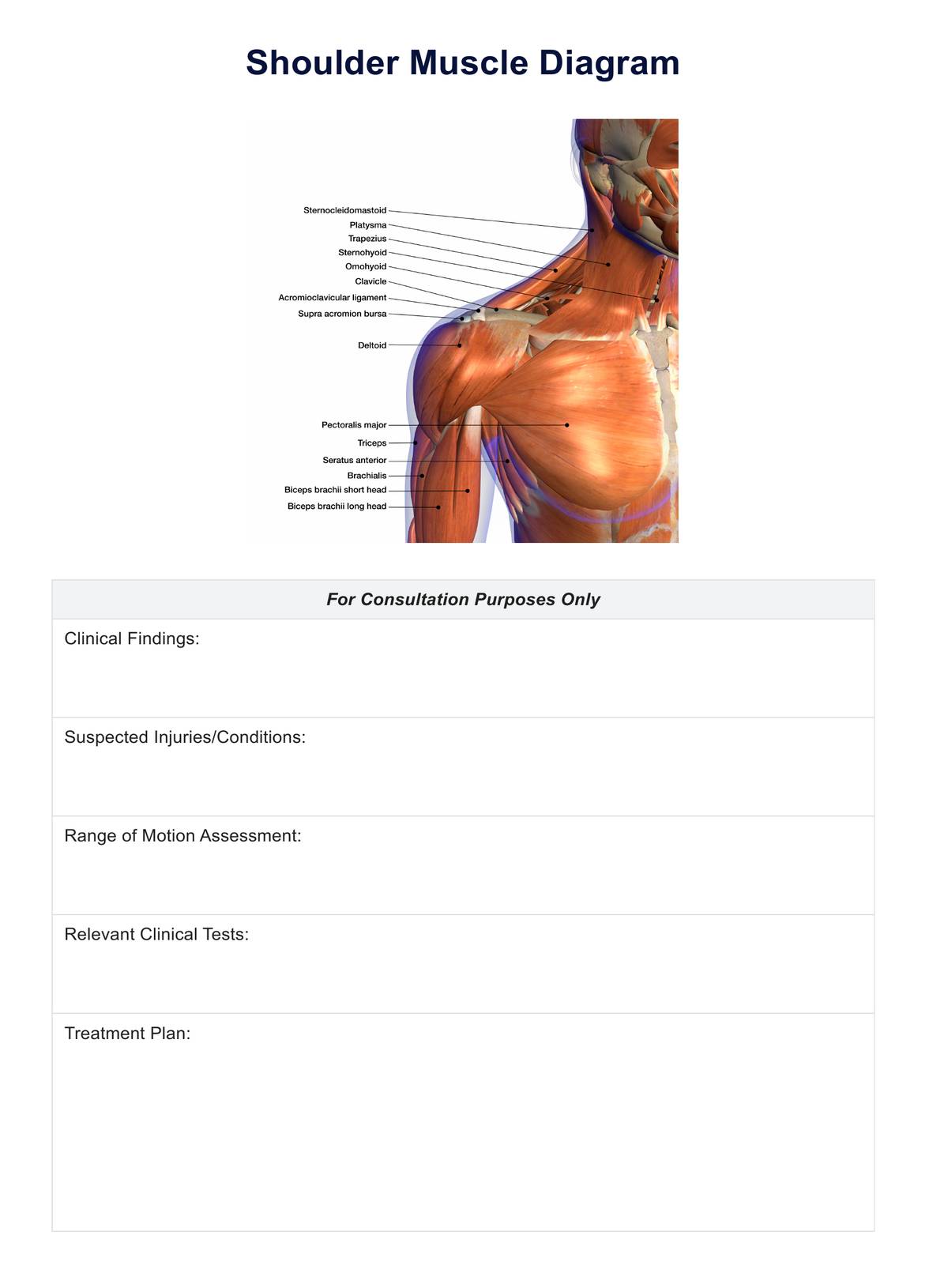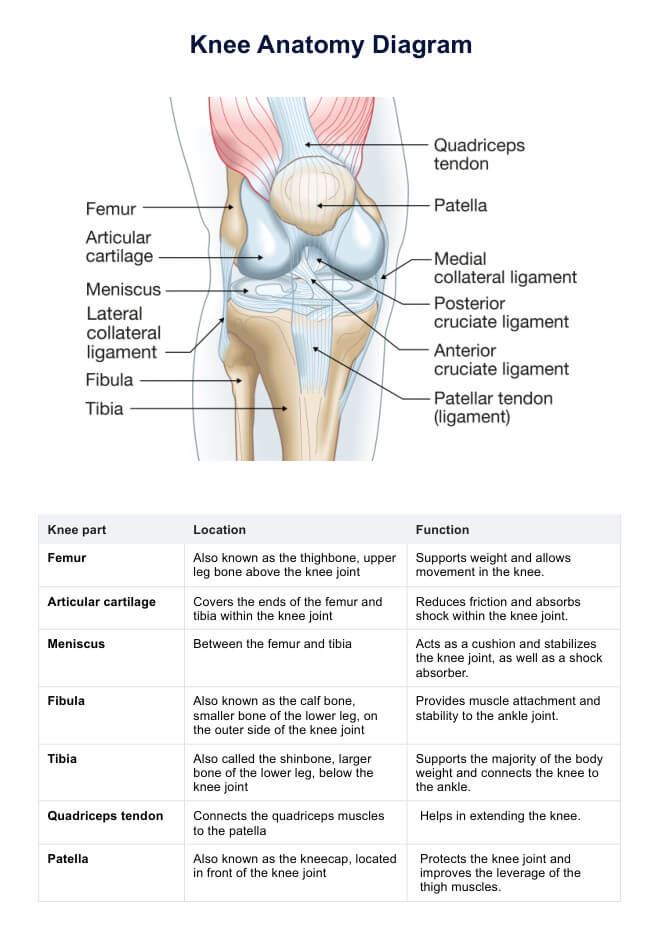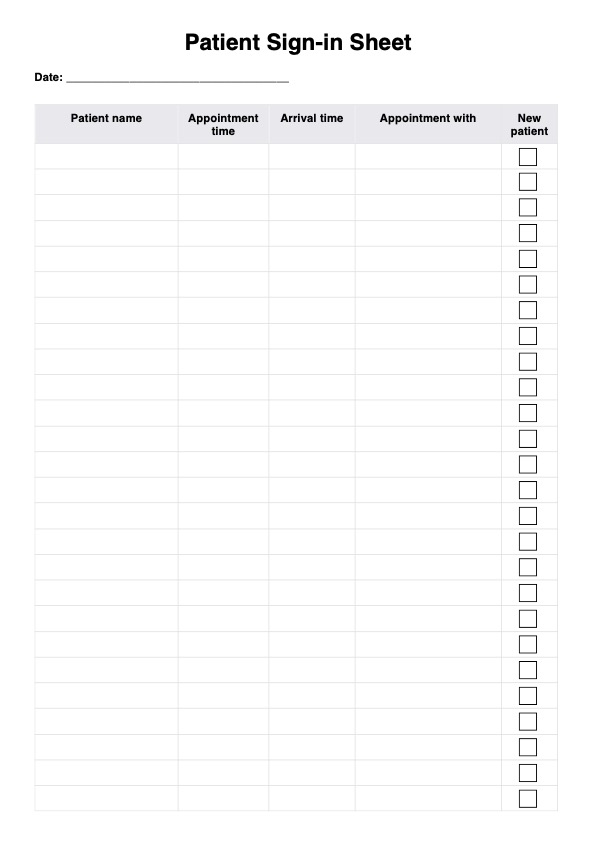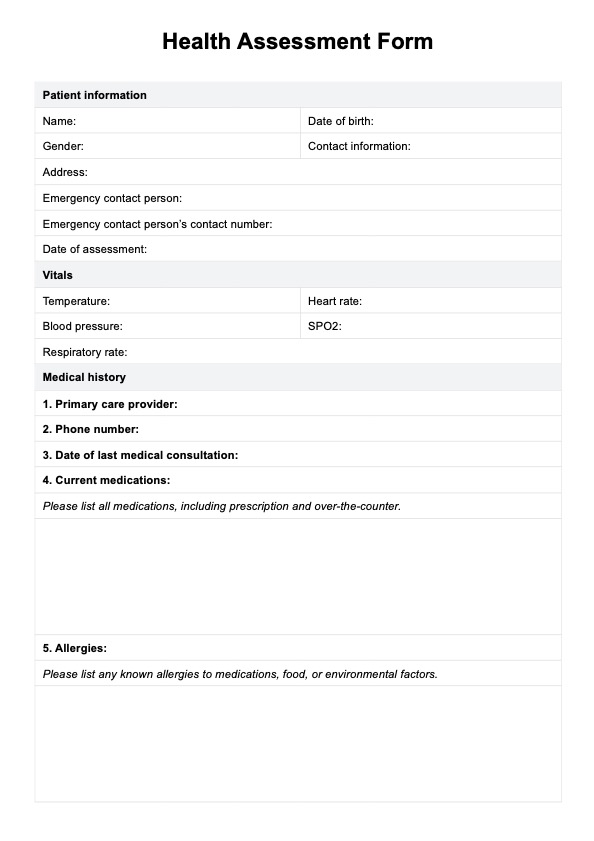Muscle Diagram
Ensure you have a muscle diagram template on hand for educational purposes or clinical settings. Click here for a free, downloadable copy!


What is a Muscle Diagram?
A Muscle Diagram is a detailed visual representation of the human body's muscular system. It shows the various muscles of the human body and their exact locations, as well as how they connect to bones and work in conjunction with each other.
A muscle of the body diagram of muscle tissues is an essential tool for understanding the human body, muscle fibers, and muscle movements. It helps healthcare professionals, such as physical therapists, orthopedic surgeons, and sports trainers, to identify and target specific muscle groups, including upper body muscles, for rehabilitation, training, or strengthening exercises.
Moreover, a Muscle Diagram can also aid in diagnosing medical conditions by clearly visualizing any abnormalities or injuries in certain muscle groups. For instance, it can help pinpoint the exact location of a muscle tear, strain, or other injury, allowing for precise and targeted intervention. Additionally, it serves as a valuable educational tool for students and individuals interested in anatomy, providing a foundational understanding of how muscles contribute to movement and overall bodily function.
Muscle Diagram Template
Muscle Diagram Example
Different muscle diagrams
Muscle group diagrams vary to cater to specific needs and areas of study. Detailed diagrams showcase the various muscle types, each with unique characteristics and functions. Here are some of the muscle diagrams available on Carepatron for your use:
Chest Muscle Diagram
A Chest Muscle Diagram displays the anatomy of chest muscles, including the pectoralis major, pectoralis minor, serratus anterior, and subclavius. It also shows the primary muscles involved in breathing movements and how they work together with the chest muscles to expand and contract the ribcage during respiration.
This diagram of chest muscles is designed to be a comprehensive graphical representation, offering insights into the muscles within the chest region. It is essential in fostering a deeper understanding of chest muscle anatomy, proving especially useful for those in academic, medical, and physical fitness fields.
Leg Muscle Diagram
Healthcare professionals commonly utilize a Leg Muscle Diagram to educate patients about the anatomy, functions, and interconnectedness of leg muscles, which are part of the skeletal muscle system. This visual aid can encourage discussions concerning various conditions that affect leg muscles, such as strains, sprains, or compartment syndrome, allowing for more straightforward explanations and developing treatment plans.
This diagram also helps individuals understand the significance of targeted exercises to strengthen these muscles. Healthcare professionals may also use the diagram to demonstrate proper exercise techniques, such as squats, lunges, calf raises, and leg presses. These exercises enhance strength, stability, flexibility, and muscle development in the lower extremities.
Forearm Muscle Diagram
A Forearm Muscle Diagram is a detailed illustration that represents the intricate structure and arrangement of the muscle tissue in the human forearm. Highlighting key muscles such as the flexors, extensors, and the intricate network of smaller muscles, along with bones like the ulna and radius, this diagram offers a comprehensive view of the forearm's anatomy.
Healthcare professionals, particularly during consultations, employ this forearm diagram to clearly explain various conditions, potential therapies, and preventive care methods. By using this diagram of forearm muscles, patients are also better equipped to actively engage in discussions about their forearm health, leading to a more participatory approach to managing their healthcare.
Other muscle diagrams
Apart from chest, forearm, and leg diagrams, there are also other muscle diagrams that can help healthcare professionals better understand the human body. These include:
- Cardiac Muscle Diagram: This diagram elaborates on the cardiac muscle, which forms the heart's walls and is crucial for pumping blood throughout the body. Like the smooth muscle found inside hollow organs, the cardiac muscle is an involuntary muscle, but it is striated and has unique properties that facilitate the heart's continuous rhythmic contractions.
- Functional Muscle Diagram: This diagram emphasizes various functions and the muscles responsible for each one, from flexion and extension to the intricate movements facilitated by the flexor muscles and the external oblique muscle. It depicts how muscle cells operate and shows the process of muscle contraction, where a muscle contracts to generate movement or maintain stability.
- Skeletal Muscle Diagram: This diagram illustrates the skeletal muscles responsible for voluntary movements. It includes important muscles like the pectoralis major, latissimus dorsi, and the extensor carpi radialis longus and brevis. These muscle diagrams also highlight the long thoracic nerve and the medial pectoral nerve, which are essential for muscle contraction and movement.
What are the benefits of using a Muscle Diagram?
Muscle diagrams help to visualize the location and function of different muscles in the body. They can be used for educational purposes, as well as for exercise and rehabilitation. Here are some of the main benefits of using a Muscle Diagram:
Easy visual representation
Healthcare professionals and educators often use muscle diagrams to explain the human body's complex musculoskeletal system. Using a visual representation makes it easier for individuals to understand the location and function of various muscles in the body.
Helps with exercise
Muscle diagrams are commonly used in fitness centers and gyms as a reference for workout routines. By knowing which muscles are being targeted during specific exercises, individuals can ensure that they are working out effectively and efficiently.
Enables better understanding of injuries
Muscle diagrams can also help understand injuries by pinpointing which muscles are affected. This helps healthcare professionals and patients understand the cause and location of an injury, which can aid in creating an effective treatment plan.
Commonly asked questions
The Muscle Diagram serves as a reference that can be used to learn, memorize, or master the anatomy of your arm muscles repeatedly.
In clinical practice, the Muscle Diagram is intended to serve as an educational tool for patients or a guide when developing the most effective treatment approach for a specific condition.
Yes, there are different types of muscle diagrams, each focusing on a different type of muscle, such as skeletal, cardiac, and smooth muscles.


